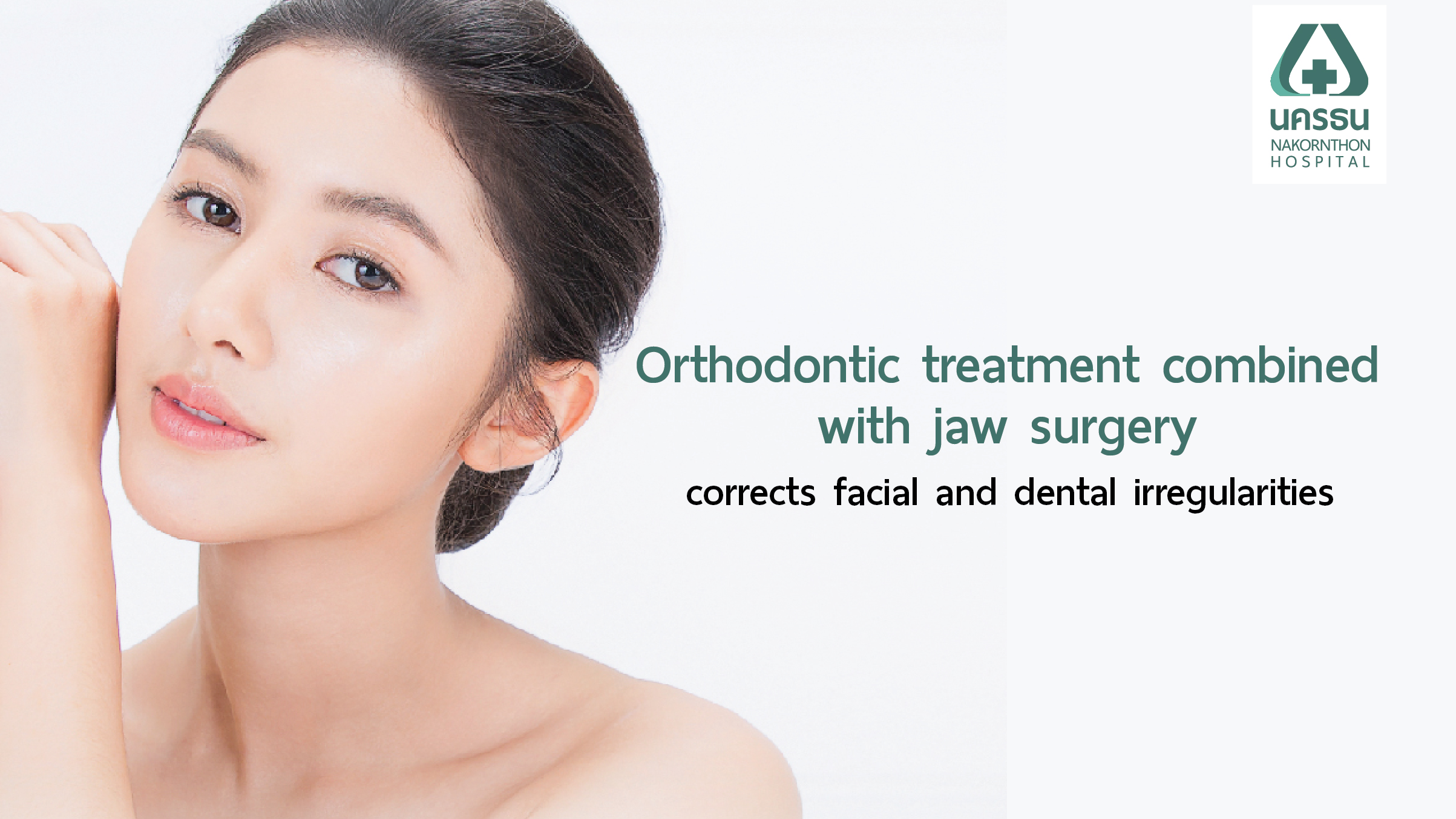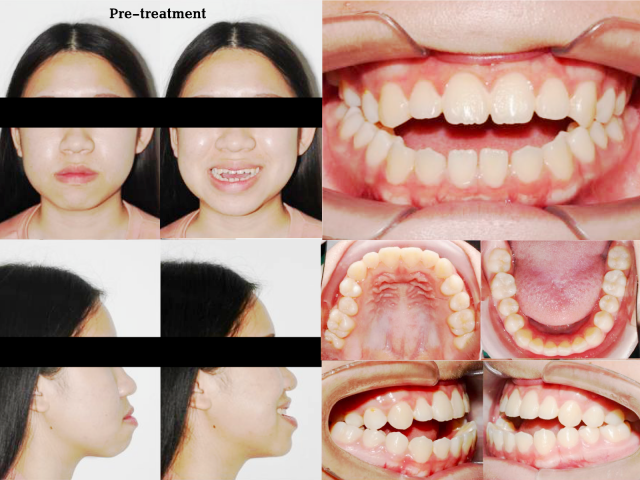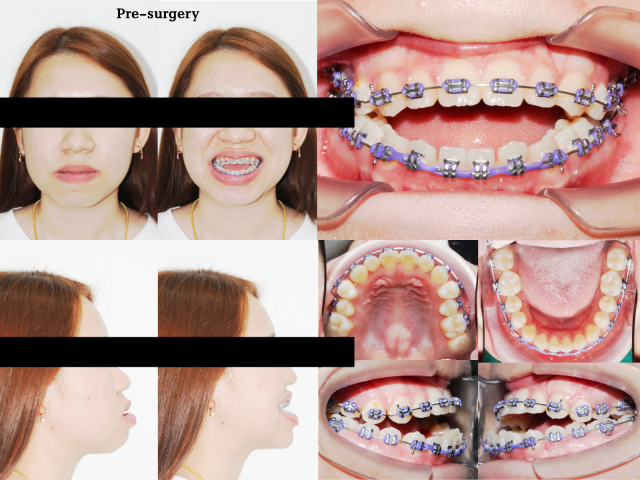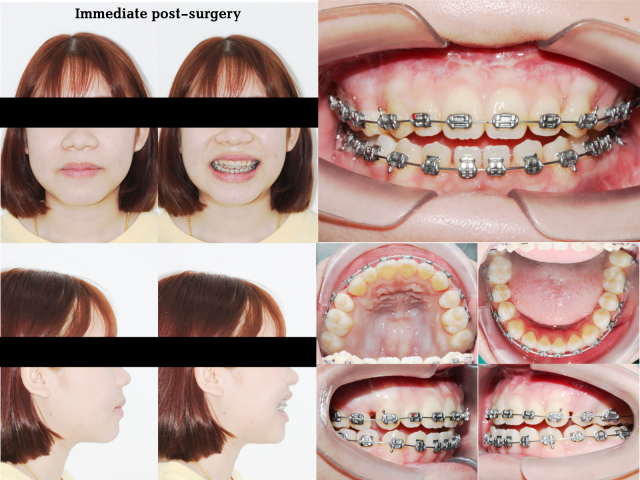Orthodontic treatment combined with jaw surgery corrects facial and dental irregularities.
Center : Dental Center

Individuals experiencing protruding teeth, crowded teeth, excessive gum display, a protruding chin, facial asymmetry, and chewing abnormalities may benefit from jaw surgery in conjunction with orthodontic treatment. This comprehensive approach addresses both dental and skeletal irregularities with a focus on personalized dental care, ensuring safety and effectiveness.
Choose to read by topic:
What is Orthodontic Treatment Combined with Jaw Surgery?
Orthodontic treatment combined with jaw surgery is a surgical procedure to adjust the position of the jaw, along with orthodontic treatment to help correct and improve facial abnormalities. This treatment consists of two parts: correcting the facial jaw structure and treating abnormal tooth alignment. Individuals with abnormalities in both the upper and lower jaw, such as a short or long midface, a protruding or receding chin, or facial asymmetry, may require more than just orthodontic treatment. Therefore, patients in this group often need to undergo surgery to ensure that the upper and lower jaws are properly positioned. This is a collaborative treatment plan between oral and maxillofacial surgeons and orthodontists. Typically, surgery is performed when the patient is between 20-22 years old, and it may involve one or both jaws, as well as potential chin augmentation surgery.
The benefits of orthodontic treatment combined with jaw surgery
- Correcting facial abnormalities such as misaligned teeth, protruding chin, or facial asymmetry to improve chewing efficiency and effectiveness.
- Addressing facial irregularities for improved facial aesthetics.
- Enhancing lip closure for better speech articulation and clearer pronunciation, leading to improved self-esteem.
- Preventing and avoiding continuous problems associated with temporomandibular joint (TMJ) disorders.
- Restoring normal daily activities, including chewing, eating, speaking, and breathing, while also improving facial harmony and attractiveness, ultimately contributing to an overall better quality of life.
The Orthodontic Treatment combined with Jaw Surgery
The Orthodontic Treatment combined with Jaw Surgery can be approached in two ways:
- Orthodontic Treatment Preceding Jaw Surgery: In this approach, the patient undergoes orthodontic treatment to align the teeth properly before the surgical procedure. This typically takes about 1-2 years to correct dental misalignment and adjust the tooth axes. Although it may exacerbate facial asymmetry and dental misalignment temporarily, it allows for better evaluation of facial structures and occlusion by the surgeon. Once the surgery is completed, most of the dental occlusion is nearly complete, and the patient continues orthodontic treatment for 6 months to 2 years to fine-tune the bite.
- Jaw Surgery Preceding Orthodontic Treatment: This method reduces the time required for pre-surgical orthodontics to 6-12 months and avoids the period of significant dental misalignment seen with pre-surgical orthodontics. After recovery, the patient proceeds with orthodontic treatment to further align the teeth and optimize the occlusion, typically taking about 1 year. However, this approach is considered on a case-by-case basis as it may not be suitable for all patients, depending on the initial dental alignment.
Example Case:
 Image 1 The patient presents with a protruded and deviated jaw, along with an anterior open bite, making it difficult to chew food. |

Image 2 Due to multiple issues with the jawbone, a surgical plan is devised involving pre-surgical orthodontics (early surgical approach), which requires 6 months of dental preparation before the surgery. The surgical plan is then developed digitally using three-dimensional radiographic images and three-dimensional tooth models to position the bones and teeth appropriately. |
 Image 3 After the upper and lower jaw surgeries, including the repositioning of the chin to achieve a proportional facial appearance, the patient's facial proportions are significantly improved. The surgery corrects the deviated chin position and the open bite. However, post-surgical orthodontic treatment is still required to address any bite issues that remain after the surgery, following the predetermined treatment plan. |
 Image 4 The side profile of the patient before and after orthognathic surgery demonstrates a clear change in facial proportions. The patient exhibits increased confidence and improved ability to chew food effectively after the surgery. |
Preparing for jaw surgery involves several steps
- General health assessment: This includes a physical examination, blood tests, urine tests, chest X-rays, and an evaluation of readiness for anesthesia.
- Patients with pre-existing medical conditions need clearance from their regular physicians before surgery.
- Patients should maintain good health leading up to the surgery. If they develop a fever, cough, runny nose, or have excessive mucus, the surgery may need to be postponed.
- Maintain hygiene by bathing, washing hair, and removing nail polish from both fingers and toes before surgery.
- Patients typically need to stay overnight at the hospital the day before surgery and refrain from eating or drinking for 8 hours prior to entering the operating room.
Jaw Surgery Procedure
Before jaw surgery, the patient will be administered anesthesia to prevent pain during the procedure. The dentist will perform the surgery inside the mouth to avoid facial scarring. The procedure begins by opening the inner gum tissue. The jawbone is then cut and moved to the desired position, secured with metal plates to keep it stable and connected. Finally, the incision is closed with stitches after placing a drainage tube.
Self-care After Jaw Surgery
- Recovery time in the hospital typically ranges from 3-4 days post-surgery, but this may vary for each individual.
- The dentist may use rubber bands to hold the upper and lower jaws together for 2-4 weeks if there is misalignment or difficulty biting. This may restrict mouth opening but allows for liquid food intake.
- Swelling and bruising on the face may occur during the first week after surgery due to the procedure. Swelling gradually subsides, nearing normal conditions after about a month, with facial shape stabilizing within 6 months post-surgery.
- Apply cold packs to both cheeks for 2-3 days, then switch to warm compresses for another week.
- Tooth brushing can begin on the 2nd or 3rd day after surgery using a soft-bristled children's toothbrush. Care should be taken to avoid infection; mouthwash and gentle brushing are recommended.
- Patients should consume only liquid foods and avoid chewing for 6-8 weeks.
- Avoid strenuous activities such as sports that impact the jaw for 6-8 weeks.
- Sutures in the mouth are typically removed about 2 weeks after surgery.
- Follow-up appointments with the dentist are necessary weekly for the first month, then every 3 months for a year to monitor progress.
- Between 9-18 months after surgery, the dentist will consider removing the bone-anchored metal plates.
Regardless of the method chosen, undergoing orthodontic treatment alongside jaw surgery typically requires follow-up orthodontic care in all cases. Patients can choose the type of orthodontic appliance they prefer, whether it's traditional braces or clear aligners, Invisalign. The combination of orthodontic treatment and jaw surgery can help correct dental misalignment and enhance facial aesthetics. If interested, patients can seek consultation from a dentist at the Dental Center of Nakornthon Hospital or inquire for more information by calling 0-2450-9999 extension 1346-1347.
Free Online Consultation
Article of Dental Center





